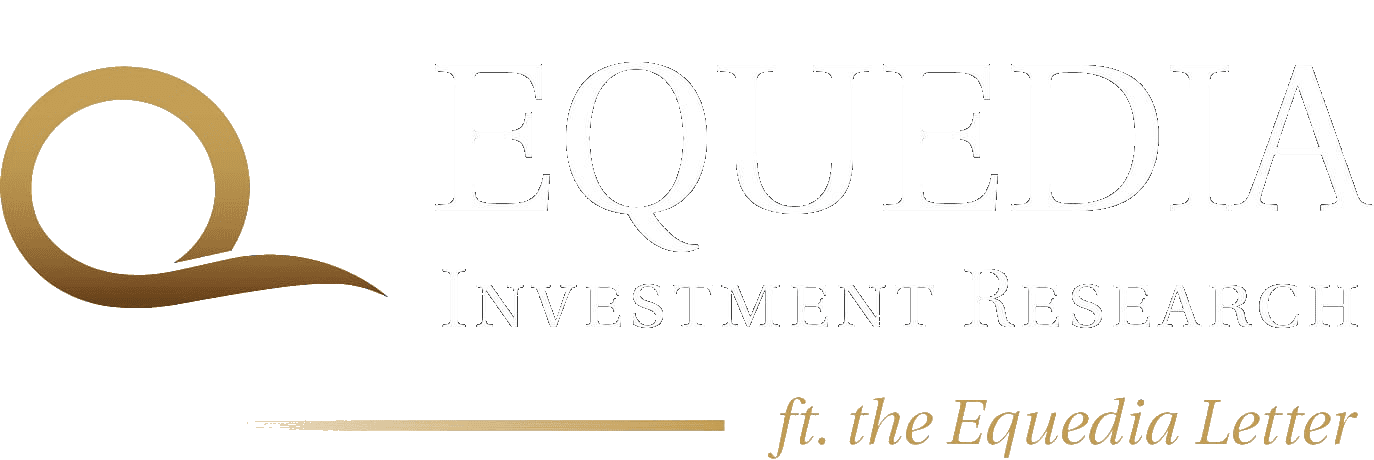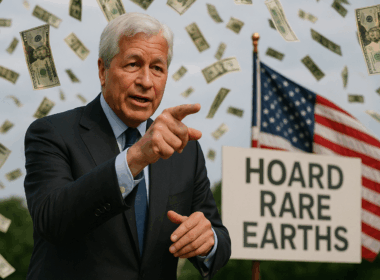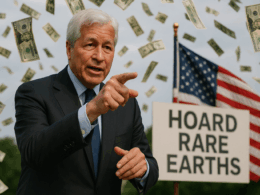The following story goes into the shadowy corridors of power where history, ambition, and influence collide.
This story pulls back the curtain on the Rockefeller dynasty’s transformation of modern medicine, exposing how philanthropy became a masterstroke of control.
From the Flexner Report’s overhaul of medical education to the creation of a pharmaceutical-driven healthcare system, this gripping tale reveals the calculated moves that shaped public health as we know it.
He Who Pays the Piper Calls the Tune.
Part One
Chapter One: The Network
The words echoed through the marble corridors of the Rockefeller Institute, where the grand ambition of reshaping medical education in America had been born.
It wasn’t just about improving standards. It was about control—control over education, medicine, and ultimately, society itself.
This wasn’t philanthropy; it was strategy.
Fred Gates, a former preacher turned financial visionary, sat in a polished leather chair in John D. Rockefeller’s opulent office. Rockefeller’s empire wasn’t just oil; it was influence.
And Gates was his instrument.
“Fred,” Rockefeller began, his voice soft but commanding, “what we need is efficiency. The kind of efficiency that shapes the minds of a nation. We’re not just funding education; we’re investing in the future. But not just any future—our future.”
Gates nodded. He had a plan. The Rockefeller Foundation would pour millions into medical schools across the country, but not without conditions. The schools that accepted the money would adopt curricula steeped in pharmacology and laboratory research. Natural medicine, holistic approaches, and nutrition? Those would be relegated to the dustbin of history.
The Flexner Report was their opening gambit. Published in 1910, it was a scathing critique of medical education in America. Abraham Flexner, an academic with ties to the Carnegie Foundation, had written it with Rockefeller’s backing. The report exposed the inadequacies of medical schools, pointing to their lack of standardization and scientific rigor. But it also set the stage for a seismic shift—one that would align medical education with the interests of the pharmaceutical industry.
Flexner’s recommendations were clear: Close the substandard schools and fund only those that met rigorous scientific criteria.
Behind closed doors, Rockefeller and his advisors ensured that “rigorous scientific criteria” meant a focus on pharmaceutical research. Within a decade, the number of medical schools in America had been halved, and those that survived owed their existence to Rockefeller’s largesse.
At Yale, Johns Hopkins, and the University of Chicago, grants poured in. But the money came with strings attached. Rockefeller’s representatives sat on the boards, shaping policy and curriculum. The schools’ dependence on external funding made them compliant, willing to toe the line.
And then there was the American Medical Association. Once a fragmented group of physicians with little centralized authority, the AMA had been transformed by Rockefeller’s funding. It now wielded enormous power over accreditation and licensure, enforcing standards that aligned perfectly with Rockefeller’s vision.
It wasn’t just about medicine; it was about molding society.
Rockefeller’s influence extended beyond education. He supported research institutions, think tanks, and media outlets, ensuring that the narrative always served his agenda. The average citizen, unaware of the intricate web of influence, trusted their doctors and educators, never suspecting that their choices had been shaped by unseen hands.
Gates knew the stakes were high. Rockefeller’s rivals were watching, waiting for an opportunity to undermine him. But Gates also knew that they had a secret weapon: patience. They didn’t need to force their agenda overnight. The seeds they planted in medical schools and research institutions would bear fruit for generations.
By the 1920s, the transformation was complete. Medical education was now firmly in the grip of the pharmaceutical-industrial complex. Doctors were trained to prescribe drugs, not to explore alternatives. Nutrition was dismissed as irrelevant. And the public, inundated with advertising and endorsements, came to see synthetic drugs as the pinnacle of modern medicine.
In a quiet moment, Gates reflected on the irony. Rockefeller, the man whose father had sold dubious elixirs as “Dr. William Rockefeller” in the 19th century, had now legitimized the pharmaceutical industry on an unprecedented scale. The quackery of the past had been replaced with the scientific veneer of the present. But at its core, it was still about one thing: profit.
As Gates left Rockefeller’s office, he knew they were just getting started. The General Education Board, the Rockefeller Foundation, and the countless institutions they funded were more than philanthropic endeavors. They were levers of power. And Gates was the man pulling the strings.
The Flexner Report had been the opening move. Now, the real game was about to begin.
Chapter 2: The Charity Prescription
Dr. William Welch, head of the Rockefeller Institute for Medical Research, paced the room.
The institute had just received another $2 million grant from the Rockefeller Foundation, ostensibly for research into infectious diseases. But Welch knew the real purpose. The money was a weapon, and he was its wielder.
“We’re shaping the future of medicine,” Welch said to his colleague, Simon Flexner. “But not everyone sees it that way. The critics keep harping on about nutrition and holistic care. They’re stuck in the past.”
Flexner nodded. “Let them talk. They’ll be irrelevant soon enough. We control the schools, the research, and the narrative. The public trusts us. That’s all that matters.”
The AMA Journal was their primary vehicle for disseminating information. Funded in part by pharmaceutical companies, it touted the latest drugs and treatments while dismissing alternatives as quackery. The AMA’s Council on Drugs, heavily influenced by Rockefeller-backed scientists, ensured that only approved products made it to market.
Behind the scenes, the pharmaceutical companies were thriving. Patent laws and FDA regulations, both shaped by Rockefeller’s allies, created an environment where competition was minimal, and profits were astronomical. The public, convinced by advertising and endorsements, had no idea they were pawns in a larger game.
One of the most controversial moves came in the 1940s when the Rockefeller Foundation funded a series of studies linking vitamins to health outcomes.
At first glance, it seemed like a genuine effort to advance science. But the studies’ conclusions were carefully managed. They emphasized synthetic vitamins over natural sources, paving the way for pharmaceutical companies to dominate the market.
Dr. Morris Fishbein, the editor of the AMA Journal, was a staunch ally. Under his leadership, the journal became a mouthpiece for the pharmaceutical industry. Fishbein’s critics accused him of suppressing alternative therapies, but he dismissed them as cranks.
“We’re not suppressing anything,” Fishbein insisted. “We’re promoting science. If these so-called alternatives were effective, they’d stand up to scrutiny. But they don’t.”
Privately, Fishbein admitted that the AMA’s reliance on pharmaceutical advertising created a conflict of interest. But he saw it as a necessary evil. Without funding, the AMA couldn’t maintain its influence. And without influence, the medical establishment couldn’t control the narrative.
As the years passed, the divide between orthodox and alternative medicine grew wider. The Rockefellers had succeeded in creating a system where dissenting voices were marginalized, if not silenced outright. Doctors who questioned the pharmaceutical model risked losing their licenses. Researchers who pursued unorthodox studies found themselves cut off from funding.
Yet, despite their success, Rockefeller and his allies knew the battle was far from over. Public skepticism was a constant threat. They needed to stay ahead, to keep shaping perceptions, to ensure that their vision of medicine remained dominant.
“This is only the beginning,” Rockefeller had once said. “The world will remember us not for what we built, but for what we changed.”
And change it they did.
Chapter 3: The Machinery of Influence
By the late 1930s, the Rockefeller empire was no longer just an empire—it was the empire. Oil, education, medicine—they owned the chessboard, and they were moving the pieces.
But there was one frontier left to conquer: public health.
The Milbank Memorial Fund was their golden ticket. On the surface, it was everything America loved—noble, altruistic, a beacon of hope in a nation still finding its way after the Great Depression. Behind closed doors, it was something else entirely: a machine designed to shape government policy and steer the future of healthcare.
John Kingsbury was the man with the plan. As the Fund’s executive director, he didn’t just play the game—he wrote the rules. Kingsbury was a true believer in his mission: preventive medicine, public health, and, most importantly, federal health insurance. He wanted a system that looked like compassion but worked like capitalism, ensuring the pharmaceutical and insurance industries stayed rich while the public thought it was all for their benefit.
“The public needs a story,” Kingsbury said, leaning forward in a smoke-filled meeting room in New York. His piercing gaze scanned the small group of advisors around him. “Not just data, not just charts—real, human stories. A mother choosing between medicine for her kid and food on the table. A worker dying because he can’t afford a doctor. We sell that story, and we win.”
But Albert Milbank wasn’t buying it. Milbank, the Fund’s president and its ultimate gatekeeper, was more than just a wealthy philanthropist. He was a businessman—a pragmatist who knew when to cut his losses. And Kingsbury? He was looking more and more like a liability.
“John,” Milbank said one afternoon in his corner office, the Manhattan skyline a gray blur behind him. “We have a problem.”
Kingsbury smirked, the kind of smirk that told you he thought he’d already won. “A problem? I think we’re on the verge of a breakthrough. The studies are—”
Milbank cut him off with a wave of his hand. “It’s not the studies. It’s you. Your health insurance crusade—it’s ruffling feathers in places we can’t afford to ruffle.”
“You mean the AMA?” Kingsbury shot back, his voice rising. “Those dinosaurs are terrified of progress. We’re on the right side of history, Albert, and you know it.”
Milbank’s jaw tightened. “It’s not just the AMA. It’s Borden.”
Kingsbury blinked. “Borden? The milk company?”
“Yes, the milk company,” Milbank snapped. “The AMA is calling for a boycott of Borden’s products because of you. Because of the Fund. You’re putting my other interests at risk, and that’s not something I can tolerate.”
Kingsbury leaned back in his chair, crossing his arms. “So this isn’t about health insurance. It’s about money. Your money.”
Milbank’s eyes narrowed. “It’s about survival, John. The Fund has always been about science, objectivity—staying above the fray. You’ve turned it into a soapbox for your personal agenda. That ends now.”
Kingsbury stood, his chair scraping against the floor. “You’re making a mistake, Albert. The public needs this. The country needs this.”
“And the Fund needs to stay alive,” Milbank said coolly. “You’ve left us no choice. Your resignation is effective immediately.”
For a moment, the room was silent except for the hum of the city outside. Kingsbury stared at Milbank, his face a mixture of shock and fury. Finally, he grabbed his coat and stormed out without another word.
Milbank sighed and sank back into his chair. This wasn’t how he wanted it to end, but he knew it had to be done. The Fund couldn’t afford to become a target—not now, not ever.
The Rockefeller empire wasn’t built on ideals; it was built on power, precision, and the ability to adapt. Kingsbury was a visionary, but visionaries had a way of burning too bright. Milbank had extinguished the flame, but the machinery of influence kept turning, as relentless and unstoppable as ever.
Meanwhile, the Rockefeller Foundation’s investments in medical research were yielding dividends. Laboratories funded by the foundation were making breakthroughs in antibiotics and vaccines. But these advances came with a price: the dominance of synthetic drugs over natural remedies.
The pharmaceutical companies were quick to capitalize.
With Rockefeller’s backing, they launched marketing campaigns that positioned their products as modern miracles. Doctors, trained in Rockefeller-funded schools, prescribed the drugs without question. Patients, trusting their physicians, accepted the treatments as the best medicine science could offer.
The machinery of influence extended to the media.
Popular magazines and newspapers ran glowing stories about the wonders of modern medicine, often written by journalists with ties to Rockefeller-backed institutions. Public service announcements, sponsored by the Milbank Fund, urged citizens to “trust science” and “follow their doctor’s advice.”
The result was a society deeply embedded in a pharmaceutical paradigm. Alternative approaches were dismissed as outdated or unscientific. The idea that health could be achieved through diet, exercise, and natural remedies was relegated to the fringes of medical thought.
But not everyone was convinced. A small but vocal group of critics began to question the system. They pointed to the growing influence of corporations in medicine, the conflicts of interest within research institutions, and the suppression of alternative therapies.
“This isn’t about health,” one critic wrote in a letter to the editor of a prominent medical journal. “It’s about profit. The Rockefellers don’t care about curing disease; they care about controlling the market.”
The criticism didn’t go unnoticed.
Rockefeller’s advisors recognized the need to address the growing dissent. They launched a counter-campaign, funding studies that reinforced the legitimacy of mainstream medicine and discredited alternative approaches. Public relations firms were hired to manage the narrative, ensuring that the critics were portrayed as fringe elements.
For every dissenting voice, there were ten more singing the praises of Rockefeller-funded initiatives. The machinery of influence was relentless, and it showed no signs of slowing down.
Chapter 4: The Council of Power
In June 1946, a closed-door meeting took place at the Waldorf Astoria in New York City called the International Health Conference.
The attendees included some of the most powerful representatives from 61 nations: business magnates, university presidents, and government officials. At the head of the table sat David Rockefeller, the youngest of John D. Rockefeller Jr.’s sons and the future face of the family dynasty.
“Gentlemen,” David began, his voice calm but authoritative, “our influence has grown beyond even my grandfather’s wildest dreams. But we cannot afford to rest on our laurels. The world is changing, and we must change with it.”
The meeting’s agenda was ambitious. The Rockefellers were planning their next move: a global network of influence that would extend their reach far beyond America. Education and medicine had been their proving grounds. Now, they aimed to shape international policy.
Central to this plan was the creation of the World Health Organization.
Officially, the WHO was a United Nations agency dedicated to improving global health. Unofficially, it was a vehicle for Rockefeller interests.
The Rockefeller Foundation played a key role in the WHO’s establishment, providing funding and technical expertise. They placed their allies in key positions, ensuring that the organization’s priorities aligned with their own. Public health campaigns focused on vaccines and pharmaceuticals, often at the expense of broader issues like sanitation and nutrition.
At the same time, the Rockefellers were investing heavily in international development.
Through organizations like the Ford Foundation and the Carnegie Endowment, they funded projects in agriculture, education, and infrastructure. But these initiatives weren’t purely altruistic. They were also designed to create new markets for American goods and services, further entrenching the Rockefeller empire.
The meeting at the Waldorf Astoria concluded with a clear mandate. The Rockefellers would continue to expand their influence, but they would do so subtly, avoiding the spotlight. Their power would be felt, not seen, their legacy written in the policies and institutions they shaped.
As the attendees filed out of the room, David Rockefeller lingered, deep in thought. The challenges ahead were formidable, but he was confident. The machinery his family had built was unstoppable, a testament to the power of vision and determination.
“We’re not just shaping the world,” he murmured to himself. “We’re defining it.”
Join us in the next edition of the Equedia Letter to see what happens next.
Part 2 and the conclusion of “He Who Pays the Piper Calls the Tune” will be published on January 12, 2024.
Please follow us on X, or subscribe to our email list for the next instalment.
Until then, Merry Christmas and Happy New Year!













Hello
What i have to Do to benefits with your service
I’m familiar with it through the radical /left-leaning literature that is critical of the influences that have shaped the medical and public health agenda of the US. Is this excerpted from a published essay or article? I would like to share it with due credit to the author. Thank you.